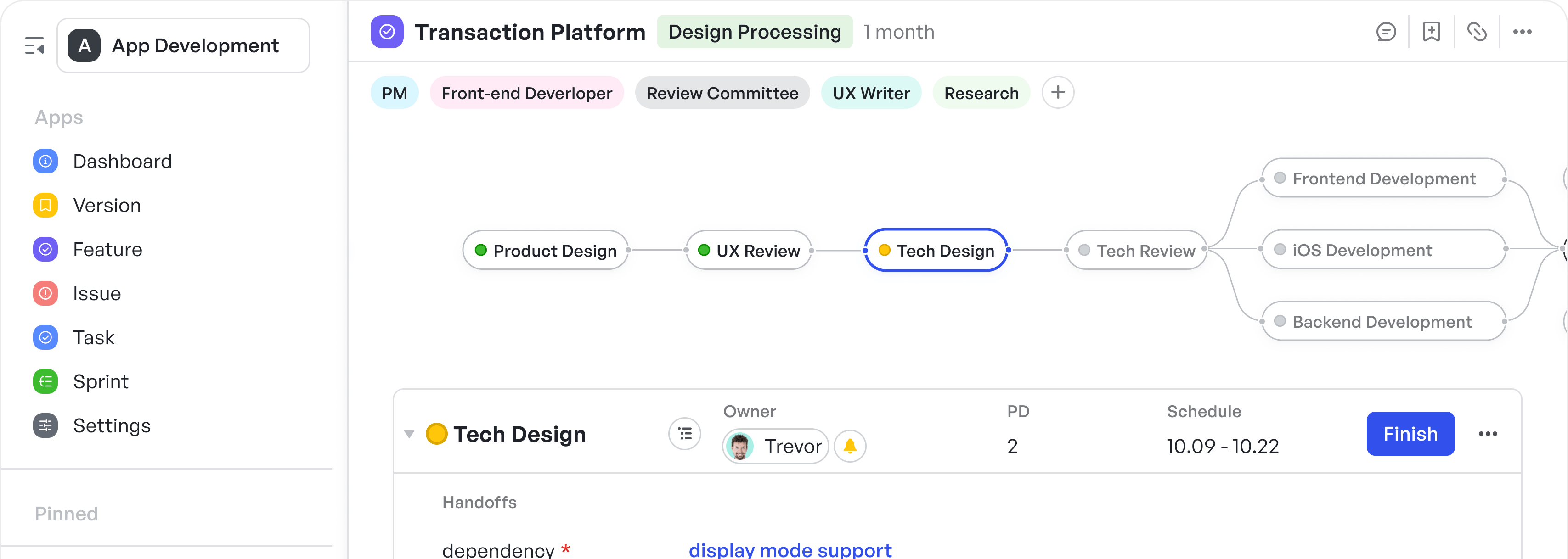Stakeholder Management in Project Management: Strategies & Tools

Stakeholder management is crucial for the success of any project. Stakeholders, ranging from team members and clients to vendors and executives, all have varying degrees of influence on project outcomes. Proper management of these stakeholders through effective tools and techniques ensures smooth project execution and alignment with business goals. In this article, we'll explore stakeholder management in project management, popular techniques, and how Meegle can enhance stakeholder engagement and management
- Identify and understand stakeholders early to align their needs and influence with project goals, ensuring smoother execution.
- Use stakeholder mapping techniques (like power-interest grids and RACI matrices) to categorize and prioritize engagement efforts effectively.
- Develop tailored communication plans with appropriate frequency, channels, and content for different stakeholder groups to maintain alignment.
- Implement structured feedback loops via surveys or meetings to improve satisfaction and adaptability throughout the project lifecycle.
- Leverage tools like Meegle for centralized communication, real-time dashboards, and customizable reports to enhance stakeholder visibility and involvement.
- Build trust and transparency through regular updates, clear task ownership, and flexible engagement strategies to strengthen stakeholder relationships.
What is Stakeholder Management in Project Management?
Navigating the nuances of stakeholder management is essential for the success of any project. Here, we succinctly explore the crux of "what is stakeholder in project management."
Identifying Stakeholders
The foundation of stakeholder management lies in identifying all parties interested in or affected by the project. This group can range from team members to suppliers, and pinpointing these entities early is crucial for tailoring engagement strategies that address their needs throughout the project.
Understanding Stakeholders
After identification, understanding each stakeholder’s expectations and potential impact on the project becomes imperative. This insight helps in formulating engagement plans that align project goals with the various interests and concerns of stakeholders, ensuring clarity and shared objectives.
Engaging Stakeholders
The core of stakeholder management is maintaining continuous communication and collaboration. Effective engagement means managing expectations and incorporating stakeholder feedback, thereby turning challenges into opportunities and ensuring alignment with the project’s trajectory.
Techniques for Stakeholder Management
Mastering stakeholder management requires the application of specific, effective techniques. This section delves into stakeholder mapping, communication plans, and the importance of feedback loops, presented succinctly to fit the need for brevity while maintaining richness in content.
Stakeholder Mapping: Strategic Categorization
Stakeholder mapping is pivotal for categorizing stakeholders based on their interest and influence over the project. Utilizing the power-interest grid, stakeholders are segmented to prioritize engagement efforts. Incorporating RACI matrices further refines this process by defining roles and responsibilities, ensuring stakeholders are engaged appropriately throughout the project lifecycle.
Communication Plans: Connecting Effectively
Effective stakeholder management hinges on comprehensive communication plans. These plans dictate the frequency, methods, and content of communications tailored to each stakeholder group, established from the stakeholder mapping process. Routine updates and dedicated communication channels keep stakeholders aligned with project progress, fostering a transparent and trusting environment.
Feedback Loops: Enhancing Engagement
Establishing structured feedback loops is crucial for stakeholder satisfaction and project improvement. Short, targeted surveys or workshops after major milestones offer a platform for stakeholders to voice their perspectives. This proactive solicitation and incorporation of feedback demonstrate a commitment to stakeholder input, driving project success and long-term relationship building.
Top Stakeholder Management Tools and Techniques
Understanding Stakeholders
- Identification: Begin by identifying all potential stakeholders, and understanding their interests and impact on the project.
- Analysis: Assess each stakeholder’s level of influence and interest to determine how best to engage them.
Creating Tailored Communication Plans for Effective Stakeholder Engagement
- Channels and Frequency: Establishing the right channels and frequency of communication tailored to the preferences of different stakeholders.
- Content: Ensuring the content is relevant and accessible, providing the right level of detail to the right stakeholder.
Promoting Stakeholder Involvement and Collaboration in Projects
- Participation: Involve key stakeholders in decision-making processes where appropriate.
- Feedback Loops: Create open channels for stakeholders to provide feedback and contribute to the project's direction.
Managing Stakeholder Expectations with Transparency and Flexibility
- Transparency: Transparency of project goals, progress, and challenges helps set realistic expectations.
- Adaptability: Agile response to stakeholder concerns and adapt plans accordingly to maintain alignment with project goals and stakeholder interests.
Building Strong Stakeholder Relationships in Project Management
- Trust: Building trust through consistent and honest communication.
- Recognition: Recognizing and valuing each stakeholder’s contribution to the project.
Best Practices for Managing Stakeholder Engagement
Fostering strong, productive relationships with stakeholders is a cornerstone of successful project management. Building these relationships involves several key practices:
- Early Identification and Continuous Monitoring: Begin by identifying all potential stakeholders at the outset of the project. Keep this list updated and monitor stakeholder influences and relationships as the project evolves.
- Clear Communication: Establish open lines of communication. Keep stakeholders informed with regular updates, tailored to their interests and impact on the project. Effective communication helps in managing expectations and mitigating misunderstandings.
- Engagement Planning: Develop a stakeholder engagement plan that outlines how and when to engage with each stakeholder or stakeholder group. This plan should be flexible, allowing for adjustments as the project progresses and stakeholder needs change.
- Feedback Mechanisms: Implement mechanisms for stakeholders to provide feedback. This includes surveys, meetings, and informal check-ins. Use this feedback to adjust project plans and strategies, demonstrating responsiveness to stakeholder concerns.
Why Effective Stakeholder Management is Crucial for Project Success
Effective stakeholder management plays a pivotal role in the success of any project. It leads to several key benefits:
- Risk Reduction: By understanding stakeholder expectations and potential concerns early, teams can identify and mitigate risks before they escalate.
- Improved Collaboration: Active stakeholder engagement fosters a collaborative environment, encouraging teamwork and collective problem-solving.
- Increased Success Rates: Projects that effectively manage stakeholder relationships are more likely to be delivered on time, within budget, and to stakeholders' satisfaction, increasing overall success rates.
In sum, effective stakeholder management is not just about keeping stakeholders informed but also about leveraging their insights and expertise to enhance project outcomes.
Stakeholder Management Tools and Techniques in Project Management
Effective management of stakeholders is crucial for any project's success. Utilizing the right tools and techniques can significantly streamline this process, ensuring stakeholders are engaged, informed, and satisfied throughout the project lifecycle. Here's a look at some commonly used stakeholder management tools, with a special focus on the unique features offered by Meegle.
Stakeholder Analysis Software: MindGenius
- Function: MindGenius is designed for stakeholder mapping and analysis, allowing project managers to visually map out stakeholders and assess their influence and interest in the project.
Project Communication Platforms: Slack
- Function: Slack is a popular tool for project communication, providing chat rooms (channels) organized by topic, private groups, and direct messaging.
Feedback Collection Tools: SurveyMonkey
- Function: SurveyMonkey enables the collection of stakeholder feedback through online surveys, providing insights into stakeholder satisfaction and areas for improvement.
Collaboration and Document Management: Google Docs
- Function: Google Docs offers real-time document collaboration, allowing multiple stakeholders to work on documents simultaneously.
Real-Time Project Management Dashboards: Trello
- Function: Trello provides a visual way to manage projects with boards, lists, and cards for tasks and milestones. Utilizing Meegle for Stakeholder Management and Engagement
At Meegle, we ensure every step of the process is interconnected and transparent. With Meegle, you gain a comprehensive view of your projects through intuitive workflow diagrams that illustrate every phase-from high-level plans to detailed tasks. This clarity establishes clear roles and responsibilities while fostering consensus among teams, paving the way for smoother communication and effective collaboration.
Related Read: Best Trello Alternative Tools for Smarter Workflows
Centralized Communication
- Integrated Messaging: By integrating with instant messengers, like Slack, Lark and Teams, Meegle ensures that team members can receive updates, notifications, and collaborate in real-time, enhancing the overall efficiency of stakeholder engagement and project management. This seamless integration keeps everyone aligned and fully informed of project progress and any emerging issues that require attention.
- Project Context: Utilizing basic information pages of Meegle to ensure stakeholders have easy access to relevant information.
Visibility and Collaboration
- Dashboards: Employing customizable dashboards to provide stakeholders with a real-time view of project progress.
- Collaborative Workspaces: Creating collaborative workspaces that stakeholders can access to contribute insights and monitor project aspects they are interested in.
Tracking Engagement and Feedback
- Analytics: Using Meegle’s workload management to track stakeholder engagement and identify areas for improvement.
Project Transparency
- Task Assignments: Demonstrating how task assignments in Meegle offer transparency in who is responsible for what, aligning with stakeholder expectations.
Custom Updates
- Notifications: Setting up custom notifications in Meegle to keep stakeholders informed about the updates most relevant to them.
- Regular Reporting: Crafting regular reports through Meegle to provide stakeholders with insight into project performance against KPIs.
Conclusion
Managing stakeholders effectively is as much an art as it is a science, involving a high degree of communication, organization, and empathy. In the contemporary project landscape, tools like Meegle can significantly enhance the effectiveness of stakeholder engagement and management. By combining traditional best practices with Meegle’s advanced features, project managers can ensure stakeholders are not just informed but also actively engaged in the project’s journey to success.
The world’s #1 visualized project management tool
Powered by the next gen visual workflow engineRead More
Check All BlogsStart creating impactful work today



